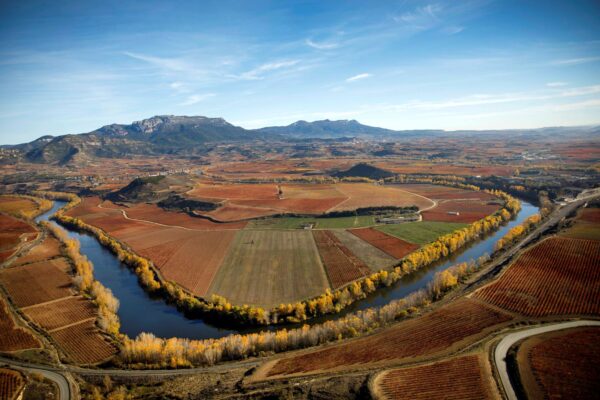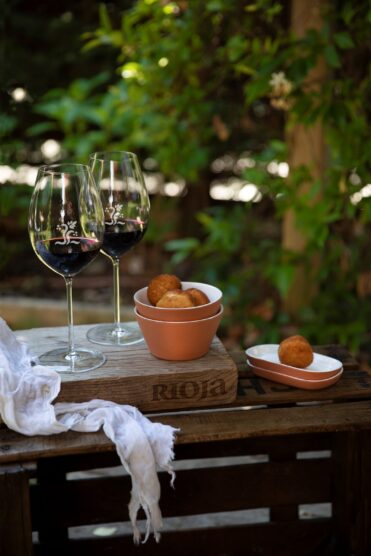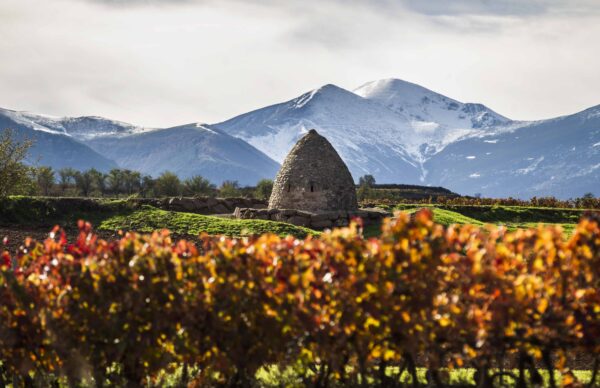Not Just Your Parents’ Rioja
The broad range of styles from Spain’s iconic wine region.

It’s fair to say that for many years the red wines from Rioja, Spain’s iconic wine region, showed a certain sameness. Although there were different levels of quality, and some producers stood out, the wines were almost all well-oaked blends, with the tempranillo variety dominating. In fact, the tiers of quality in Rioja were defined solely by how long the wines matured in barrels—often American rather than French—and bottles before being released for sale.
Length of maturation is still the criterion for one dimension of quality. Red Crianzas, for example, which are on the lower end of the aging spectrum, must be aged a total of two years, with at least one year in barrel. This is far from saying they are poor quality, and an excellent example is Familia Torres La Carbonera Malpastor Rioja Crianza 2020, aged for a minimum of 12 months in French and American barrels and delivering attractive concentrated red fruit and bright acidity in ideal proportion.


A step up, Rioja Reserva red wines must be aged at least three years, with a minimum 12 months in barrel and six months in bottle before being sold. A fine example is Altanza Rioja Reserva 2017, in a classic style with a rich fruit profile and subtle veneer of oak.
The top tier, Gran Reserva, needs a total of five years’ maturation, with at least two years in barrel and two in bottle. Beronia Gran Reserva Rioja 2016, which is almost all tempranillo with a touch of the graciano variety and aged 27 months in barrels and 36 in bottles, is a full-bodied, elegant wine with layers of dark and red fruit flavours and a juicy texture. For its part, Muga Prado Enea Gran Reserva Rioja 2016 is an opulent and delicious wine with nuanced dark fruit and top notes of spice, all married to well-calibrated clean, fresh acidity.

The regulations regarding aging are still in place, but in 2017 new rules allowed for increased emphasis on geography: the places where the grapes were grown. This reflected a global trend toward producing wines with what is often called “a sense of place.” The result is that Rioja now has classifications reminiscent of Bourgogne, where wines can be labelled by the broad region, subregions, villages, or individual vineyards.
In Rioja, that means that generic, regional wines are simply labelled Rioja, but they should never be underestimated. Torres Sangre de Toro Rioja is full of lovely red and dark fruit flavours balanced with juicy acidity that sets it up for many dishes.
Wines labelled as coming from one Rioja’s three subregions or zones (vinos de zona) are designated Rioja Oriental, Rioja Alta, or Rioja Alavesa. These are important distinctions because although Rioja is a relatively small region, its three zones have particular geographical and climatic characteristics, and they produce broadly distinct wine styles. Olivier Rivière Rayos Uva Rioja 2021 is a typically fresh, balanced, and flavourful red from the Rioja Alta region, where relatively high elevations contribute to acid development.

More precisely identified are vinos de pueblo, the new (2024) term for a category created in 2017. These are wines named for Rioja’s 144 communes that have vineyards. They are the equivalent of Bourgogne wines from communes such as Volnay and Pommard. Another 2017 innovation was the ability to label wines by a single vineyard (viñedo singular). Wines sourced from single vineyards are considered distinctive because of their unique growing conditions. It’s especially important in Rioja because this is a region of small plots—more than 100,000 of them.


By mid-2023, 148 single vineyards had been registered, and these wines are subjected to a dedicated tasting to ensure they meet quality standards, as well as other stringent criteria. An outstanding example is Contino Single Vineyard Reserva Rioja 2019 from the CVNE winery’s Contina vineyard. It’s 86 per cent tempranillo, 6 per cent each of graciano and mazuelo, and 2 per cent garnacha, and it delivers elegance and power in its perfectly calibrated dark fruit and acidity.
The result is that there is a greater range of Rioja wines, classified by both aging and geography. Overall, the stress is still on red wines, which account for roughly 90 per cent of Rioja’s production, and on tempranillo, Rioja’s signature red grape variety, which accounts for about 90 per cent of all red grapes grown. There is increasing interest in other red varieties, especially garnacha (grenache elsewhere) and graciano.

But let’s not forget the white wines that account for a 10th of Rioja’s production. Often made from the viura variety, they can be blends of it and many others, including garnacha blanca and verdejo, and international varieties such as chardonnay and sauvignon blanc. Sierra de Toloño Rioja Blanco 2023 is an organic white made solely of viura. Matured in stainless steel, with 10 per cent in old French barrels, it shows lovely fruit purity and vibrant acidity—the sort of wine you can sip on its own or pair with many dishes.
Although Rioja is a well-established region, it’s evolving in interesting ways. Some may think the new regulations fly in the face of tradition, but they should draw wine-lovers in for a closer look. Keep an eye out for the village-designated and single-vineyard offerings, but don’t hesitate to buy Rioja wines labelled by length of maturation. Across the board, Rioja delivers quality and value.
Rioja wines
Altanza Rioja Reserva
Beronia Rioja Gran Reserva
CVNE Contino Single Vineyard Rioja Reserva
Muga Prado Enea Rioja Gran Reserva
Olivier Rivière Rayos Uva Rioja
Sierra de Toloño Rioja Blanco
Torres La Carbonera Malpastor Rioja Crianza
Torres Sangre de Toro Rioja




